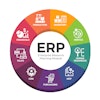
When sustainability is taken seriously, companies focus on achieving a fine balance between business objectives and social and ethical obligations, and this results in benefits which are briefly explained below.
● Increases business opportunities as customers prefer to associate with companies that have “green” and “sustainable” products.
● Enhances collaborative potential with suppliers as a sustainable business model requires better supplier engagement for supply chain transparency, sustainable products development, business resiliency planning, emissions reporting, etc.
● Protects business reputation as companies focus a lot on their own and suppliers’ compliance with social obligations and regulatory mandates related to corporate governance, anti-money laundering, anti-bribery and corruption, labor rights and welfare, environment protection, etc.
● Reduces environmental impact as companies become more conscious about GHG emissions across their own and suppliers’ operations including the extended supply chain of each product line.
A McKinsey study found that top ESG/sustainability performers witness faster growth and higher valuation of 10-20 percentage points in each case – this alone is a compelling reason to embark on the journey towards a sustainable business model.
Assuming that corporate sustainability goals and materiality assessment are already in place, here are the 6 steps that procurement teams should take to drive sustainability.
1. Assess current baseline performance. A procurement team should evaluate the current processes and systems to identify the key risks and opportunities for improvement. The team can benchmark their company with industry peers and solicit help from specialists and suppliers for a better understanding of their current standing.
2. Decide objectives and plan roadmap. Next, the team should align functional objectives with corporate sustainability goals. Once the functional objectives are in place, a phased roadmap should be drawn up covering the key initiatives and the milestones over the next 1-5 years and beyond. The functional objectives and the roadmap must then be converted into category-level strategies and action plans.
3. Define policies and key metrics. In this step, the team should define the policies (or code of conduct) that will align internal and external stakeholders around the functional objectives and the areas of improvement such as carbon footprint reduction, elimination of child/forced labor from the supply chains, reduction of exposure to suppliers with questionable business practices, etc. Next comes key metrics to assess the performance of sustainability initiatives. Goes without saying that these policies and metrics should be communicated to relevant stakeholders for clarity on their roles and responsibilities.
4. Identify key third parties and partners. In this step, the procurement team should identify the suppliers who will be majorly responsible for achieving the objectives, and the key intelligence vendors, audit firms, NGOs and IT vendors that will provide essential support in certifying and monitoring sustainability practices and reporting of compliance and performance on a regular basis. Companies can even team up with industry peers on some initiatives to improve scale and efficiencies and allow mutual sharing of best practices.
5. Transform objectives into actions. Next, the team needs to transform objectives and policies into processes and practices that will ensure that sustainability initiatives are getting implemented on the ground. Here, the focus should be on the following:
● Strategic sourcing plans and actions extending from Tier 1 to sub-tiers of supply chains where possible
● Supplier selection, onboarding and engagement processes to achieve sustainability through contractual obligations, site audits and inspections, certification of practices in key areas, emissions reporting, product innovation, etc.
● Integrated intelligence systems with reporting capabilities to regularly track progress and communicate insights on compliance/performance and corrective actions to relevant internal and external stakeholders.
● Building of knowledge and skills of own and suppliers’ personnel for proper implementation of sustainability initiatives.
● Revision of performance goals and incentives of key leaders in the team to ensure that the sustainability agenda gets the attention it deserves.
6. Drive accountability through influence. Lastly, procurement teams should use their influence with other stakeholders to ensure that they hold their end of the bargain to achieve sustainability objectives. This step is necessary as procurement by itself cannot ensure the success of every initiative and must depend on third parties and cross-functional teams for the realization of its objectives.
Any procurement team struggling with sustainability should consider adopting the above framework and think through the steps to drive transformation. It is advisable to start with pilot programs focusing on a few strategic categories and suppliers before the full-scale rollout of new policies, processes, and systems. The learnings from pilot programs will lower the chances of business distress and costly failures and may even improve business outcomes upon full-scale rollout.



















